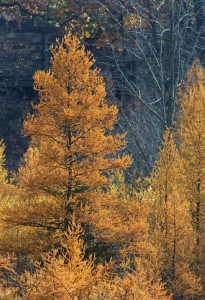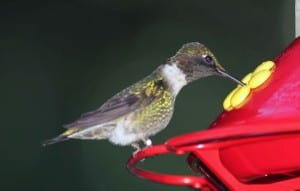
By Jennifer Fairfield
(Publisher’s note: Part 1 published yesterday.)
Flower Gardens, Trees and Shrubs, Lawn:
If you have been fertilizing your perennials, shrubs and trees this summer, stop now. Fertilizing encourages new growth, and new growth now will likely not have enough time to harden before it gets cold.
This month is a great time for planting all kinds of things, besides the vegetables we’ve already talked about. Perennials, shrubs, and trees planted in the fall can get their roots established while the soil is still warm. We usually get pretty good precipitation in the fall, but keep an eye on the amount of rain you’re getting to make sure that your new plants get enough water to make it through the winter.
It’s also a good time for dividing and transplanting lots of plants. I have a number of perennials in need of dividing, so am actually planning to take some time off later this month to do all of that.
You can generally tell if it’s time to divide a plant by how it looks. My bee balm is looking a bit hollow at the center and is also outgrowing its allotted space in the bed – both sure signs that it’s time to divide. Plants that are producing fewer or smaller than usual flowers are also probably trying to tell you that they need more space. You can also divide plants that are doing well if you simply want to get more in other places.
If you have tender summer bulbs, such as dahlias and calla lilies, wait until the foliage is dried up to dig them up for winter storage – but don’t wait until the ground is frozen. Depending on the weather, this task should be done late this month or early next.
Spring bulbs, including crocus, daffodils and tulips, get planted in the fall because they need to go through a chilling period in order to bloom in the spring. Plant them after we have had a few frosts, but before the ground is frozen. You want the soil to still be warm enough to encourage root growth, but you don’t want the air to be so warm that it encourages foliage growth.
If it’s not cool enough to plant them right away, they can be stored in a cool, dry basement, or even in the refrigerator – in paper bags, away from fruit that can cause them to rot.
Bring house plants back in that you put outside now, but spray with pesticide before you do, so as not to bring unwanted guests in with them.
Many trees have leaves that are already turning yellow or brown and falling. This isn’t a sign of an early winter, but more likely a sign of stress suffered at some point. The extreme cold we had last winter could have caused some of that stress, especially in trees ones that might not normally grow in our climate, or are at the farthest north of their range.
The intense rain we had this spring was also somewhat stressing for trees – too much water all at once makes it difficult for trees to efficiently get nutrients out of the soil. All that rain may also have caused trees to put out more leaves than it could really support, and the dry conditions we experienced later may have caused the trees to drop some of those leaves earlier than usual.

Leaves are often the first sign of stress in trees, so don’t be surprised if yours change color and drop early. There are other potential problems that could be causing your particular trees to experience stress, such as being hit by a weed whip or mower, or having an infestation of insects. Take a close look at your trees to see if you can detect any issues that you might be able to do something about before you assume it’s just the weather.
One thing you can do to help your trees make it through this winter and maybe start to rejuvenate next spring is to make sure that they get enough water this fall. If we don’t get adequate rainfall, water any new or young trees, and any that have been showing signs of stress, all the way up until the ground freezes.
Trees can’t take up much moisture from the frozen ground during the winter, so they need to be well hydrated before then. And then, throughout the winter, if we get thaws, water your trees then, as well.
Whenever the leaves fall in your yard, be sure to rake them up to avoid problems in your lawn next year. You can shred them and compost them, or save them to use as an extra layer of protection in the form of mulch for your planting beds once the ground has frozen. Rake them off in the spring, when the ground has warmed up, and then add them to your compost pile.
With some of the storms we had this summer, many of us had damage to trees. It’s a good idea to prune off dead or damaged branches from trees as soon as possible, but limit your pruning at this time of year to only those branches with damage, as other pruning now can encourage new growth that will be susceptible to harm when the cold weather sets in.
There are all kinds of things that go into deciding if September is the right time to fertilize your lawn, including how you mow, whether you irrigate, and whether you bag the clippings or leave them on the lawn. The stage of your lawn is also important – is it a new lawn, or well-established.

Birds:
September is for the birds, in many ways.
Some of our early migrators are already heading south, while others are just starting to think about it. You can help them on their way by putting out feeders (if you haven’t been feeding them all summer), and keeping them filled.
Birds need to put on a lot of fat to travel the distances they do, so providing them with food on their way through can make the difference in their survival of that long trip.
That goes for hummingbirds, too. Keeping your nectar feeders clean and filled into October could help the late travelers make their winter homes. You might also be rewarded with a sighting of an unusual hummer.
Some of the hummingbirds that don’t breed here in Michigan travel through on their way to and from their breeding grounds much farther north. They are coming from such far distances that they might not come through here until October or November, so if yours is the only feeder in sight, you just might catch a glimpse. Make sure to bring the feeders in at night if the temperature is dipping below freezing to keep them from breaking.
Providing a source of water for those weary feathered travelers is also a great idea. Flying hundreds of miles is thirsty work.




